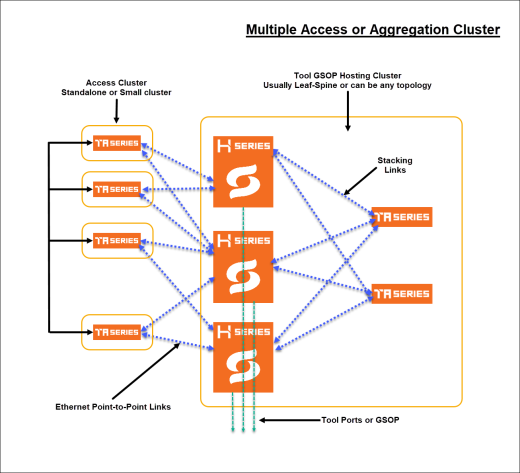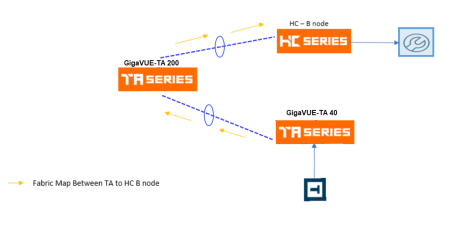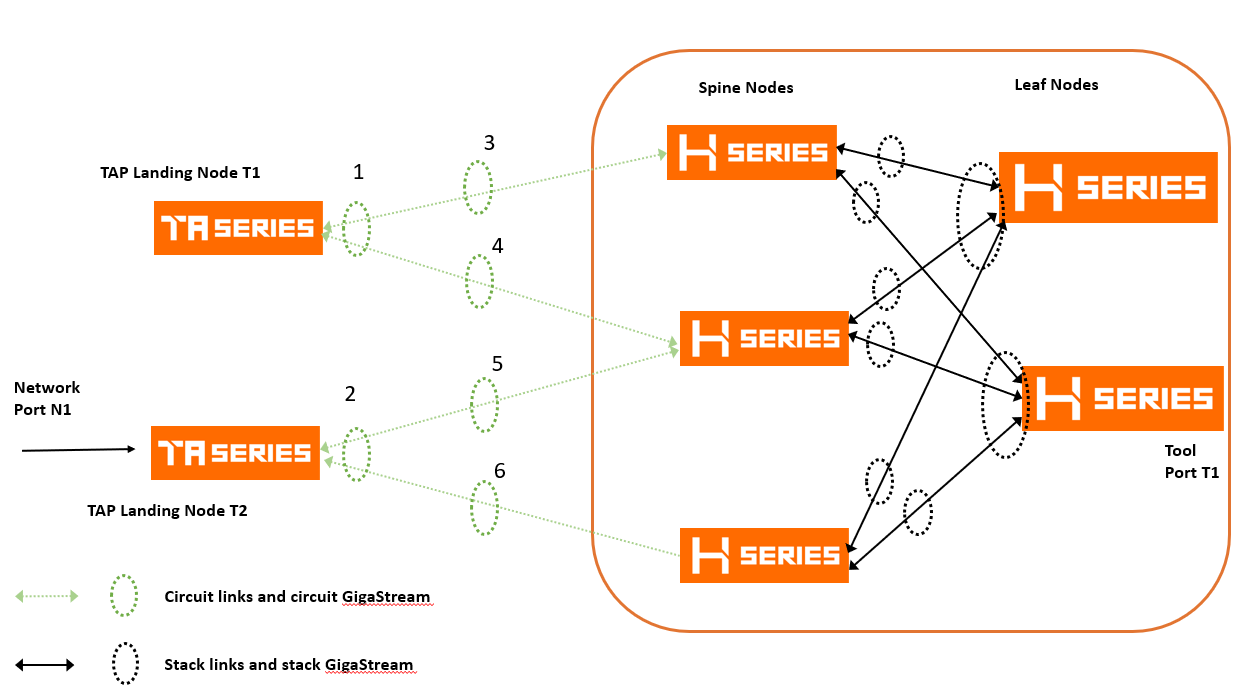Supported Topologies
Fabric map support is available for the following topologies:
In this topology, a set of access switches is connected to network ports. This is the access cluster. The access cluster is then connected to a tool-hosting cluster using Ethernet interfaces. The tool-hosting cluster is connected to the tool ports or to GigaSMART operations (GSOP).

| Figure 65 | Multiple Access Clusters |
The access nodes are connected to the tools cluster using point-to-point Ethernet links, which offer redundant connections to multiple nodes within the tool cluster.
This topology illustrates how ports can be created from any network port to any tool port as a single fabric-wide map.
The following is an illustration of multi-cluster mesh topology. In this topology there are three clusters, (A, B and C) with each cluster containing network ports, tool ports and applications (GSOP).

| Figure 66 | Multi-Cluster Mesh |
Fabric maps support multihop topology in which the maps can be created across clusters and nodes that are not connected directly. Traffic passes through the intermediate nodes to the destination.
In the following topology, fabric map is created between GigaVUE-TA A node and GigaVUE-HC-B node. But, traffic passes through the intermediate GigaVUE-TA node to reach the GigaVUE-HC-B node.

| Figure 67 | Multihop Topology |
Fabric Maps support affinity-based leaf-spine topology in which for each of the clusters, separate sub-cluster maps are created for source ports and egress GigaStream within a single physical device.
In an affinity-based leaf-spine topology, cluster maps of the following Fabric Maps are created:
- For the source cluster, the network port and the egress GigaStream in the same physical device form a cluster map.
- For the middle clusters, the ingress GigaStream and the egress GigaStream in the same physical device form a cluster map.
- For the network port or the ingress GigaStream that do not have the egress GigaStream in the same physical device, a cluster map is formed with network port or the ingress GigaStream and all the egress GigaStreams (between the cluster and cluster of the next hop).
For regular clusters with full stack link connectivity, only one circuit GigaStream is required to connect clusters so traffic can be balanced. For spine-leaf cluster that may not have full stack link connectivity, multiple GigaStreams can be used to connect to other clusters if the path requires separate connections.

| Figure 68 | Leaf-Spine Based Topology. |
Note: Refer to Multi-Path Leaf Spine section for more details about the leaf-spine topology.



